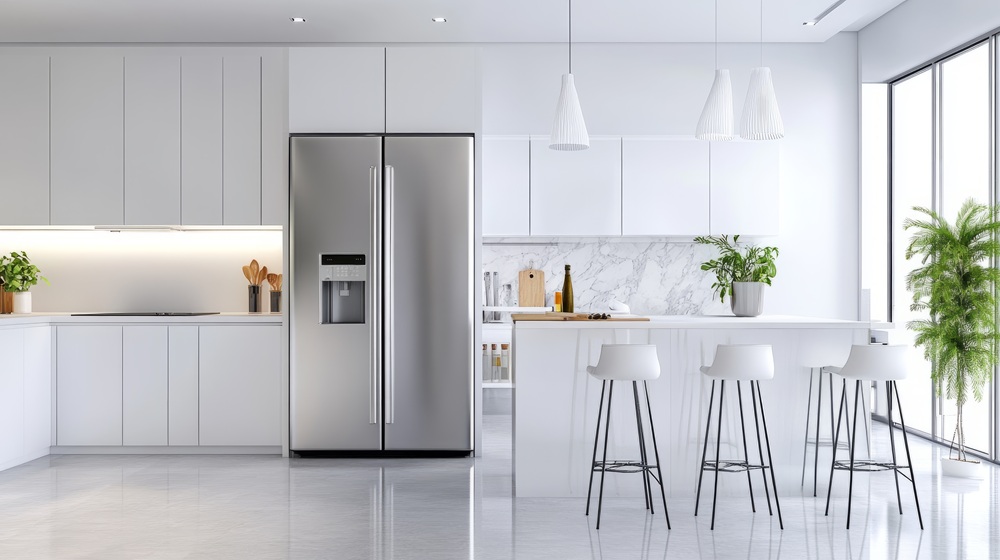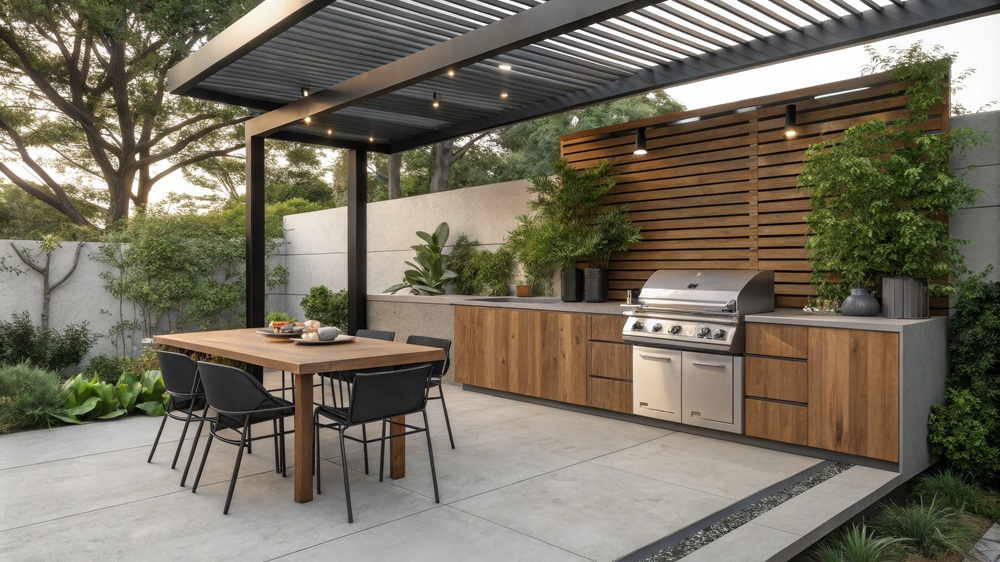Posted: Wednesday, 6 August 2025
While still early, the signs are clear: homeowners are beginning to turn to UV for safer water, cleaner air, and surface sanitation without relying on harsh chemicals. And if this momentum continues, UV could become a natural part of how we build, clean, and live in our homes.
Let’s take a walk through a typical house, room by room, and see where UV is being used today and where it could go next if its adoption keeps growing.
Kitchen: The Clean Core

What’s already happening: Modern water purifiers often use UV-C light to eliminate bacteria and viruses from tap water, particularly in Reverse Osmosis / UV systems. Compact countertop UV boxes are also making their way into kitchens, used to sanitize utensils, baby bottles, and chopping boards. New developments in Fridge technology are bringing in UV to help clean water supply.
What could happen next:
If UV tech becomes mainstream, we could see UV-LED lighting strips in fridges and pantries, preventing mould growth and keeping food fresher for longer. Faucets might come with built-in UV to sterilize water in real-time. Even cleaning wands or cutting board stations could feature UV zones that activate post-use.
Bathroom: Hygiene's Frontline
What’s already happening:
Toothbrushes are often stored in UV sanitising holders, and some beauty devices now use UV or blue light to treat skin blemishes. UV disinfection boxes are used to keep grooming tools clean.
What could happen next:
Imagine a bathroom where surfaces self-sanitise overnight using far-UVC lighting built into mirrors, toilets, and sinks. Safe to use around people, yet constantly reducing microbial build-up. This kind of tech could offer a hands-off way to fight bacteria in one of the home’s most-used spaces.
Living Room: Clean Air For All
 What’s already happening:
UV-enabled air purifiers are increasingly common, neutralising airborne viruses, bacteria, and mould spores. Some Heating Ventilation Air Conditioning (HVAC) systems now include UV disinfection for ductwork and recirculated air.
What’s already happening:
UV-enabled air purifiers are increasingly common, neutralising airborne viruses, bacteria, and mould spores. Some Heating Ventilation Air Conditioning (HVAC) systems now include UV disinfection for ductwork and recirculated air.
What could happen next:
As UV becomes more integrated into everyday systems, we might see far-UVC ceiling fixtures that disinfect the air continuously and safely, even while people are present. This tech already exists in some public environments and could one day become a feature in homes, especially during flu seasons or high-allergy months.
Bedroom: Rest Meets Innovation
What’s already happening:
Personal UV gadgets like under-eye LED/UV therapy masks are gaining popularity, and small UV air purifiers offer a more restful sleep environment.
What could happen next:
A more UV-connected bedroom might include self-sanitising wardrobes, using UV light to refresh clothes between wears. There could also be UV refresh cycles for bedding to reduce allergens and bacteria.
Hallway: The First Defence
What’s already happening:
Portable UV boxes can be placed near entrances to disinfect phones, keys, wallets, or masks after returning home.
What could happen next:
A UV-integrated entryway could feature smart coat racks or shoe storage that use enclosed UV-C to disinfect outerwear and accessories. As demand for home hygiene rises, UV could serve as a quiet gatekeeper against germs from the outside world.
Utility Room & Garage: The Overlooked Zones

What’s already happening:
Some cordless vacuums now include UV rollers to help sterilize floors during cleaning. UV is also being used in pet accessory sanitizers and laundry systems such as tumble dryers.
What could happen next:
Imagine tool stations with built-in UV compartments to disinfect gardening gloves, reusable bags, or sports equipment. It’s these kinds of functional upgrades that could make UV a natural feature in any home with kids, pets, or hobbies.
Garden & Outdoor: Sun Protection Gets Smart
What’s already happening:
Exterior woods and garden furniture are often treated with UV-protective oils and coatings, shielding materials from sun degradation.
What could happen next:
Outdoor spaces might one day include UV surface cleaners that run automatically after a BBQ or gathering. Quietly disinfecting picnic tables, play equipment, or garden tools overnight.
Is All of This Safe?
Yes, when used properly. UV light, particularly UV-C, must be shielded or used in unoccupied spaces. Today’s consumer devices are built with safety in mind: enclosed chambers, motion sensors, timers, and shutoffs.
Why This Matters
This isn’t about sci-fi gadgetry. It’s about rethinking how we keep our homes healthy:
- Cleans without chemicals on dishes, gadgets, surfaces, even air.
- Improves water safety, especially in areas that rely on well water or local sources.
- Supports reduced illness, potentially limiting transmission of airborne pathogens when technologies like far‑UVC become economical and proven.
- Preserves nutrients, like the new UV treatment of dairy ingredients.
From cleaner drinking water to air purification and daily hygiene, UV already can play a growing role in home life. And if adoption continues driven by health awareness, smart-home tech, and rising demand for low-maintenance cleanliness, the future of UV at home could be both practical and powerful.